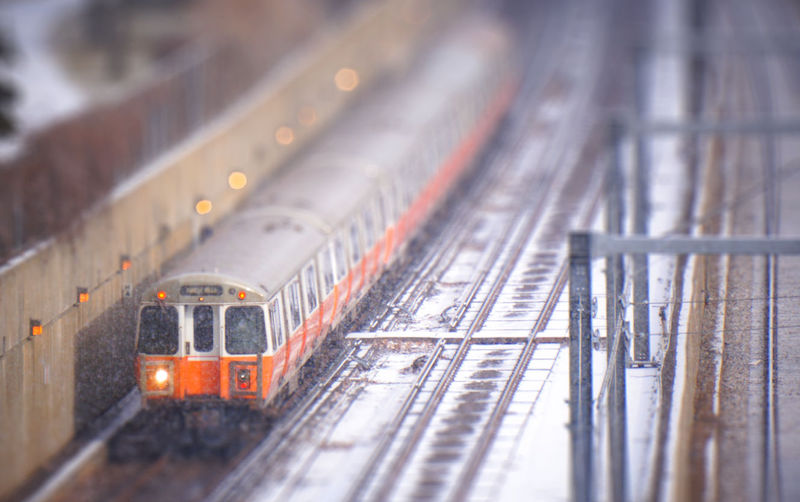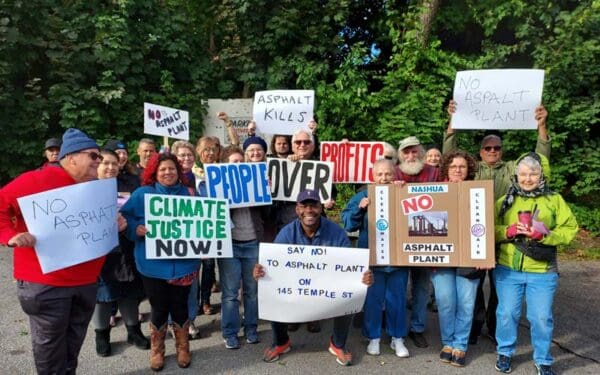
Ensuring a safe and reliable MBTA system calls for planning ahead for the impacts of climate change and extreme weather events. Photo: Mike Steinhoff via Creative Commons 2.0
When the MBTA announced a 30-day shutdown of its busy Orange Line in August, thousands of commuters had to figure out new ways of getting to work and school – myself among them. “Should I bike? Walk to a farther line? Brave the shuttle buses?” I wondered as I tried to decode a poorly made map of alternate routes.
I settled on the shuttle bus and soon found my regular 30- to 40-minute commute doubled in time. But, even as I woke up earlier than usual to catch a crowded bus, I felt hopeful. It will all be worth it, I thought, if this shutdown leads to a safer and more reliable Orange Line.
But as I reboarded the Orange Line after a month of high hopes, I soon found myself disappointed. Yes, the MBTA had completed signal upgrades, the repair and replacement of tracks, and more during the shutdown – all needed for a normally functioning Orange Line. But the agency had promised riders a better T. Instead, we got an Orange Line that meets the bare minimum ride expectations (and even those weren’t met for weeks because the T ran the trains deliberately slow since it had not completed track replacement).
Addressing the immediate safety risks was critical, of course. But a major concern has been noticeably absent from most safety discussions about the T and, indeed, from much of the MBTA’s planning and policy work overall: climate change.
A better and improved T must account and prepare for climate impacts. Normal will not make the cut.
Climate Change Threatens Transportation Safety
In New England, the ways we get around – our cars, trucks, buses, and trains – account for about 40% of climate-damaging emissions regionwide. One of the best ways to lower that impact is by getting people out of their cars and onto public transportation. But why would anyone swap their car for a bus or train if they can’t rely on it to get them to their destination safely and on time? And how can we look to public transit as a climate solution if the region’s largest public transit system is already failing to prepare for the climate impacts we can no longer avoid?
During our increasingly hot summers, MBTA riders have grown used to speed reductions or slow zones aimed at preventing accidents caused by high temperatures, which can expand or buckle train tracks. In 2015, amid record snowfalls, riders experienced 56 consecutive days on which the MBTA failed to have all its cars in service. And, over the past few years, floods have submerged parts of the MBTA system, leaving people stranded without a way home.
The Ride Ahead: The MBTA Must Prioritize Climate Resilience
Focus40 – the MBTA’s investment plan to meet the transportation needs of our region by 2040 – identified climate resiliency as one of its goals. The agency has already conducted vulnerability assessments for much of the system (though the findings have not been fully implemented) and put flood barriers at two train stations. Creating a safer and more-resilient transit system will require us to think ahead.
During the Orange Line shutdown, for example, only a small fraction of the work completed addressed climate issues. That included clearing drainage basins and testing generators for backup power supply. But those efforts are considered routine maintenance for the MBTA and do little to prepare for upcoming climate challenges.
This is despite the MBTA having found that, as soon as 2030, much of the Orange Line will be highly vulnerable to climate change impacts, such as flooding and increasingly hotter temperatures. The MBTA’s own assessment recommended increasing drainage capacity, assessing safety of operation rooms, and creating plans for various extreme weather events. In the case of storms, for example, the report recommended building infrastructure to divert flood waters away from threatened areas and, where necessary, elevating stations or tracks.
And that’s just on one MBTA line. The other lines face similar risks, as do the commuter rail and many of its bus routes.
A Missed Opportunity to Improve the T
You’d think that a month-long shutdown of an entire transit line would be a good time to implement those recommendations. Or, at the very least, get them started. That’s not what happened. Yes, the MBTA did cut through a backlog of maintenance issues during the shutdown. But that simply got us back to the status quo, which is not reliable service.
The MBTA still has not fully fortified any train, bus, or commuter-rail line against the impacts of climate change. We deserve better. We deserve a transportation system that can withstand the impacts of climate.
The MBTA must take a system-wide approach to rider safety. That means considering the impacts of our rapidly changing climate and evaluating strategies to protect all routes and modes of transit – not just individual stations or lines.
The MBTA Is Running Late
Climate resilience is no small concern – it’s a safety issue, an economic issue, and a social justice issue. During the Orange Line shutdown, I had the privilege of having other commuting options, or I could choose to work from home. But for many, the shutdown cut their lifeline to critical resources, including schools, jobs, and healthcare.
Across the board, disruptions to our transit system make existing social inequities even worse. In fact, transit delays disproportionately reduce job access for riders of color, those with low incomes, and people with limited English proficiency. Preparing for the impacts of climate change can ensure that our communities can continue to access life-essential services and opportunities.
Climate change is already here, and the MBTA is – quite literally – running late. We can prevent that. With the right planning and on-the-ground work, we can ensure a safe and reliable transit system for all.




